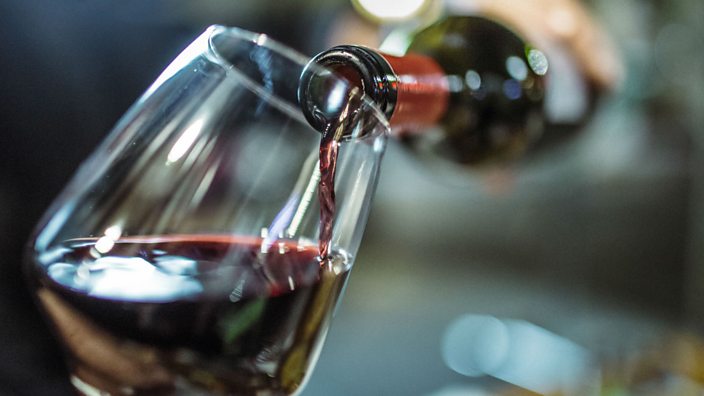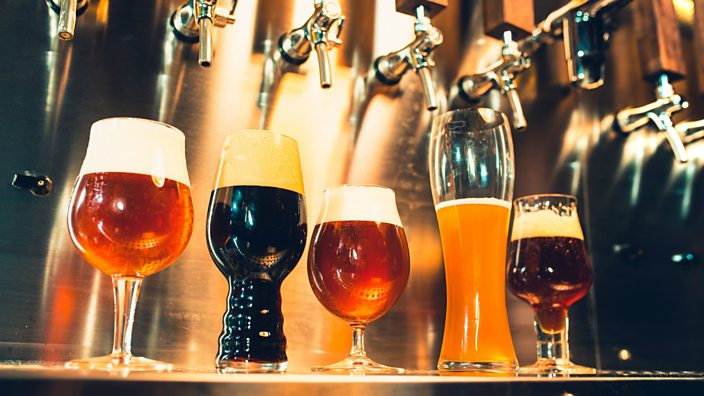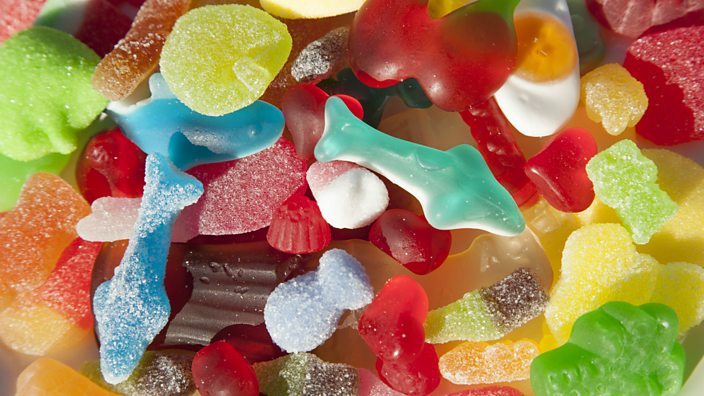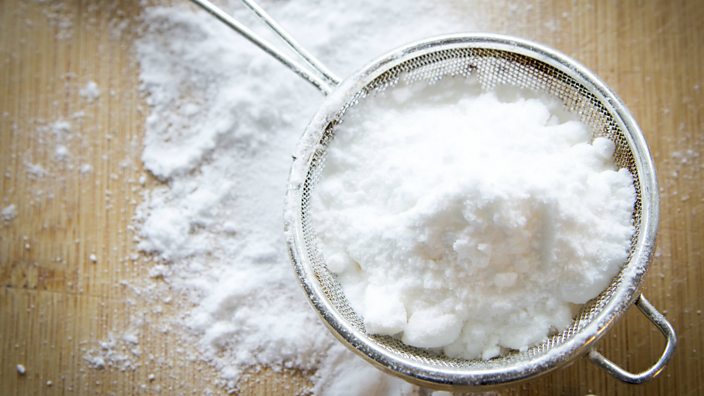Last year a
video of Turkish chef Nusret Gökçe lovingly seasoning a massive steak with a pinch of salt amassed millions of views online and earned him the nickname ‘salt bae’. But it wasn’t just his attention to detail that captured attention.
We’re obsessed with salt – despite warnings we’re consuming too much of it and harming our health in the process. But a counter-argument is gaining ground, casting doubt on decades of research and shedding light on the questions that still remain unanswered about our favourite seasoning.
Sodium, the key element found in salt, is essential for our bodies to maintain its overall fluid balance, transport oxygen and nutrients, and allow our nerves to pulse with electricity. But most populations have historically eaten more salt than advised, and health officials around the world have had their work cut out for them convincing us to cut down.
Guidelines recommend adults have no more than 6g of salt per day. In the UK we
consume closer to 8g; in the US, 8.5g.
But only a quarter of our daily intake comes from salt we add into food ourselves – the rest is hidden in the food we buy, including bread, sauces, soups and some cereals.
Adding to the confusion is that on food labels, manufacturers often refer to sodium content rather than salt, which can make us think we’re consuming less salt than we are. Salt is made up of both sodium and chloride ions. In 2.5g of salt, there is about 1g of sodium. “The general public isn’t aware of this, and just think sodium and salt are the same thing. No one tells you this,” says nutritionist May Simpkin.
One meta-analysis found a 17% greater risk of cardiovascular disease from consuming an extra 5g of salt per day
Research has found that too much salt causes high blood pressure, which can lead to strokes and heart disease, and experts broadly agree that the evidence against salt is compelling. Our bodies retain water when we eat salt, increasing blood pressure until our kidneys flush it out. Too much salt over a long period of time can put strain on our arteries and lead to prolonged high blood pressure, known as hypertension, which causes 62% of all strokes and 49% of coronary heart disease events, according to the World Health Organization.
As you might expect, cutting salt intake can have the reverse effect. In one eight-year
data analysis of blood pressure, other cardiovascular disease risk factors and mean salt intake, researchers found that a decline in salt intake by 1.4g per day was likely to have contributed to a fall in blood pressure – which in turn contributed to the 42% decline in fatal strokes and 40% drop in heart disease-related deaths.
But in a common theme in observational studies such as this one, the researchers also concluded that it was difficult to entirely separate the effects of less salt from other diet and lifestyle behaviours. Those who are more conscious of their salt intake are more likely to eat healthier overall, exercise more and smoke and drink less.
Randomised trials showing salt’s effect on the body are almost impossible to carry out. But there are also no randomised trial for obesity, or smoking, which we know kills you – Francesco Cappuccio
Long-term, randomised trials comparing people who eat a lot versus a little salt could establish cause and effect. But very few such studies exist because of the funding requirements and ethical implications. “Randomised trials showing salt’s effect on the body are almost impossible to carry out,” says Francesco Cappuccio, professor of cardiovascular medicine and epidemiology at the University of Warwick’s medical school and author of the eight-year review.
“But there are also no randomised trial for obesity, or smoking, which we know kills you.”
Meanwhile, observational evidence is in abundance. After the Japanese government launched a campaign to persuade people to reduce their salt intake in the late 1960s,
intake decreased from 13.5g to 12g per day. Over the same period there were falls in blood pressure and an
80% reduction in stroke mortality. In Finland, daily salt intake dropped from 12g in the late 1970s to as little as 9g by 2002, and there was a 75-80% decrease in deaths from stroke and heart disease in the same period.
Different strokes
But an additional complicating factor is that the effects of salt consumption on blood pressure and heart health differ from one individual to another.
Studies have found that our sensitivity to salt varies from person to person – depending on factors as varied as ethnicity, age, body mass index, health and family history of hypertension. Some studies have found that those with
higher salt sensitivity are more at risk of salt-associated high blood pressure.
In fact, some scientists are now arguing that a low-salt diet is just as much of a risk factor for developing high blood pressure as high salt consumption. In other words, there is a J- or U-shaped curve with a threshold at the bottom where risks starts to go back up.
One
meta-analysis, for example, found a link between low salt intake and cardiovascular-related events and death. The researchers argued that consuming either less than 5.6g or more than 12.5g a day is associated with negative health outcomes.
A different
study involving more than 170,000 people had similar findings: a link between ‘low’ salt intake, defined as less than 7.5g, and increased risk of cardiovascular events and death in people both with and without hypertension, compared to a ‘moderate’ intake of up to 12.5g per day (between 1.5 to 2.5 teaspoons of salt). That moderate intake is up to double the UK recommended daily intake.
The study’s lead author,
Andrew Mente, a nutritional epidemiologist at McMaster University in Ontario, concluded that reducing salt intake from high to moderate reduces the risk of high blood pressure, but there are no health benefits beyond that. And increasing salt intake from low to moderate might help too.
An optimal level is always found somewhere in the middle – Andrew Mente
“The finding of a sweet spot in the middle is consistent with what you would expect for any essential nutrient… where at high levels you have toxicity and at low levels you have deficiency,” he says. “An optimal level is always found somewhere in the middle.”
But not everyone agrees.
Cappuccio is unequivocal that a reduction in salt consumption reduces blood pressure in everyone – not just people who eat far too much. He says the wave of studies in recent years concluding contrary findings are small, include participants who are already unwell, and rely on flawed data – including Mente’s study, which used a fasting spot urine test on participants instead of the ‘gold standard’ of spreading several tests over a 24-hour period.
There aren’t many people are consuming levels as low as 3g, the level at which some of this research calls dangerously low
Sara Stanner, science director at the charity the British Nutrition Foundation, agrees that the evidence that reducing salt intake in those with hypertension lowers blood pressure and risk of heart disease is strong. And there aren’t many people are consuming levels as low as 3g, the level at which some of this research calls dangerously low.
This would be difficult to achieve, Stanner says, due to the levels of salt in foods we buy.
“So much of the salt we consume is in everyday foods,” she says. “This is why reformulation across the foods supply is the most successful approach to cut down on national salt levels, as has been the case in the UK.”
Experts also have conflicting views on whether high salt intake can be offset by an otherwise healthy diet and exercise. Some, including Stanner, say that a diet rich in potassium, found in fruit, vegetables, nuts and dairy, can help to offset salt’s adverse effects on blood pressure.
Ceu Mateus, senior lecturer in Health Economics at Lancaster University, advises that we should prioritise being aware of hidden salt in our diets rather than trying to avoid it altogether.
“The problems we have with too much salt could be similar to those linked with too little, but we still need to do more research to understand what goes on here. In the meantime, a healthy person is going to be able to regulate small amounts,” Mateus says.
“We should be aware that too much salt is really bad, but don’t eliminate it completely from your diet.”
Despite recent studies arguing the potential dangers of a low salt diet, and individual differences in salt sensitivity, the most established takeaway from existing research is that too much salt definitely increases blood pressure.
As a consultant dermatologist based in London, I have been seeing patients with skin conditions for well over a decade. Acne is one of my main areas of interest. Over the past few years, there are some observations I have made which are causing me concern: with the rise of 'wellness' and its stubborn persistence, my increasing worry is how it is affecting our relationship with food in the context of managing skin problems.
Let me give you a bit of background. I am aware that I see a self-selecting group of patients in my private clinics. Many suffer with a longstanding history of acne, most are female and from an affluent background – that is the nature of working in exclusive areas of London. Like many of us, they are intelligent, clued-up women who care not only about their skin health, but also their general health.
By the time many of them are sitting opposite me in clinic for their acne, they have already exhausted numerous avenues of treatment. This includes changing their skincare, often having spent thousands trying to find the right product, as well as manipulating their diet.
The nutrition aspect is a trend that I am finding hard to ignore. Patients are telling me how they are cutting out dairy, gluten and sugar in an attempt to clear their spots. Many are actively restricting food to the point where it is clear to me it has become an unhealthy obsession: finding excuses not to go to dinner with friends, refusing to eat a slice of birthday cake that has been lovingly made by a family member, skipping meals when out and about as there is no 'clean' café that can provide 'acceptable' or 'allowed' food. What I am dealing with is not just the acne itself, but also a very real fear of certain foods.
But let’s look at the evidence. What is the relationship with acne and diet?
The link has been discussed for decades and remains controversial. Doing good quality dietary studies is difficult and many rely on people's memory of what they ate in the past. Can you accurately recall what you ate last week, let alone 10 years ago?
Sugar may have some part to play – but the way I would translate this is not to cut out sugar altogether, but to be mindful of consumption
What we do know is that there is a growing relationship between acne development and food that has a high glycaemic index (GI) – so, potentially, sugar has some part to play. The way I would translate this, however, is not to cut out sugar altogether but be mindful of consumption. This isn’t just good for your skin, but also for your general wellbeing.
The link with dairy is actually much weaker. Still, it may have a role in acne in a small, select group of people – not everyone! For reasons that are not fully understood, low fat dairy seems to be worse than full fat. There is no acne guideline in the UK or the US which recommends cutting out dairy for the treatment of acne. There are plenty of people I see following a vegan diet who still have spots.
Likewise, I have lots of patients who have cut out whole food groups, but their spots persist. Labelling food as the problem is too simplistic and fails to take account of the multi-factorial nature of acne, which includes variations in hormones and genetics.
If food restrictions weren’t bad enough, the second thing I can’t ignore is food shaming. This is where people think it is socially acceptable to pass unsolicited advice or judgement on someone’s eating habits, blaming them for their skin disease. This has happened to me, too. The stranger in the street who tells you that you have acne because you’re eating ice cream on a hot summer’s day. The concerned relative who tells you to put the chocolate down as it’s obviously giving you spots. The troll on social media who tells you that it’s not surprising you have bad skin because you posted a picture of a slice of pizza.
We are living in a world of information overload. Everyone has a voice and a platform and social media allows us to reach a wider audience that would not have been possible 20 years ago. But how does one sort out the scientifically credible voices from the charlatans?
Just because something works for one person doesn't mean it will work for you
If you’re feeling desperate because of your spots and your self-esteem is in your boots, it is totally understandable why you would turn to the internet for advice. The difficulty is that not all advice is created equal, and there is a lot of conflicting information – sometimes even coming from health professionals themselves. And just because something works for one person doesn't mean it will work for you. We are all individuals, with our unique DNA, environment and gut and skin microbiome.
Acne has already been linked to a number of mental health concerns such as anxiety,
depression, social isolation and poor body image. Telling people who are already vulnerable to developing mental health issues to then restrict their diet is a worry. But it is happening all over social media, where people – bloggers, via naturopaths and functional medicine – promise to get to the 'root of the problem'.
No one is denying that good nutrition is important for your skin. Food has multiple roles in skin health and disease. But this is not the same as making people feel bad about their dietary choices by offering uninvited advice that is not rooted in science. This creates an unfair blame culture, criticising people who are already struggling. Patients are telling me that comments like this are affecting their mental health or creating disordered eating patterns. Many worry much more about what they eat, or think twice about eating that sugary food in public. Friends who work in nutrition and psychology tell me that I’m not alone, and that they are seeing the same thing in their clinics.
So what is the solution? If you are suffering with acne and any of this resonates, then it is important to seek medical help. Likewise, if you are noticing a loved one becoming wary around food because of their spots, please encourage them to talk to someone. Be open with your GP or dermatologist about your concerns around food. It can be really helpful to work with a team of people such as a dietitian and psychologist alongside having your skin treated.
Food does not have to be 'good' or 'bad' – the labels are too binary. Eating well for your skin is about sustained eating patterns over time, not just that packet of sweets you ate today.














